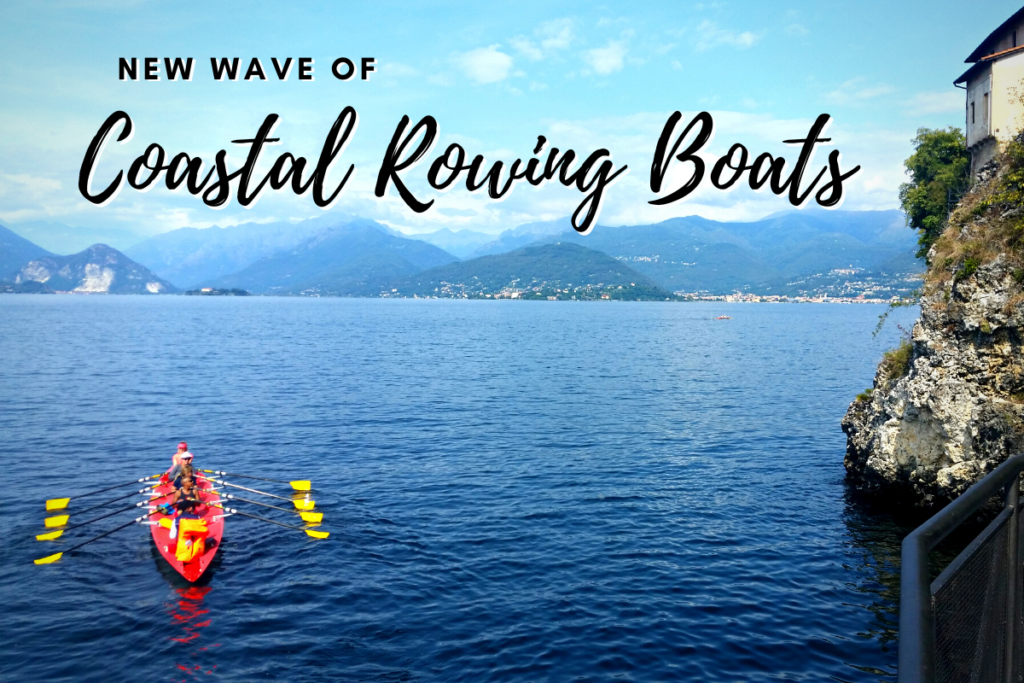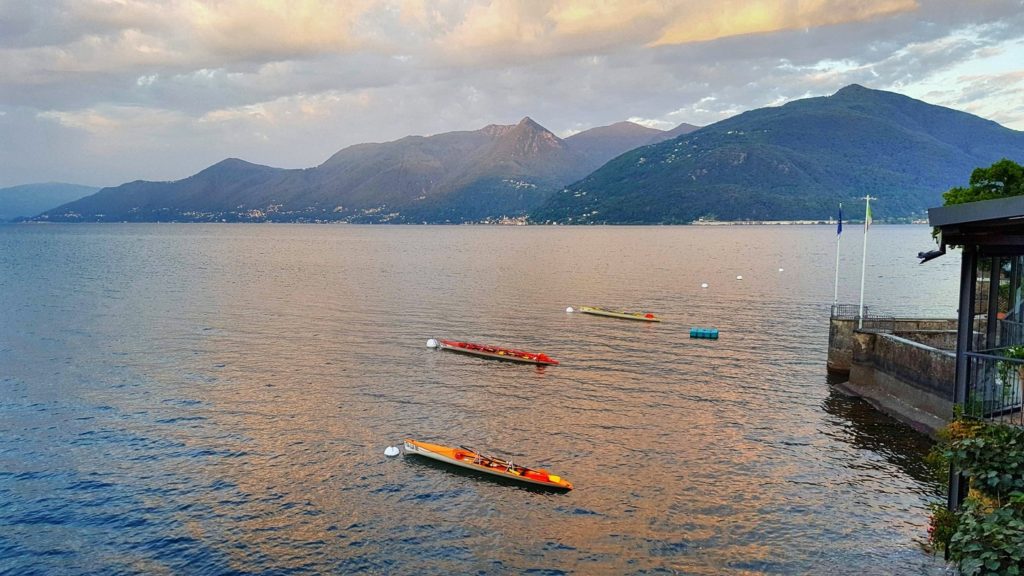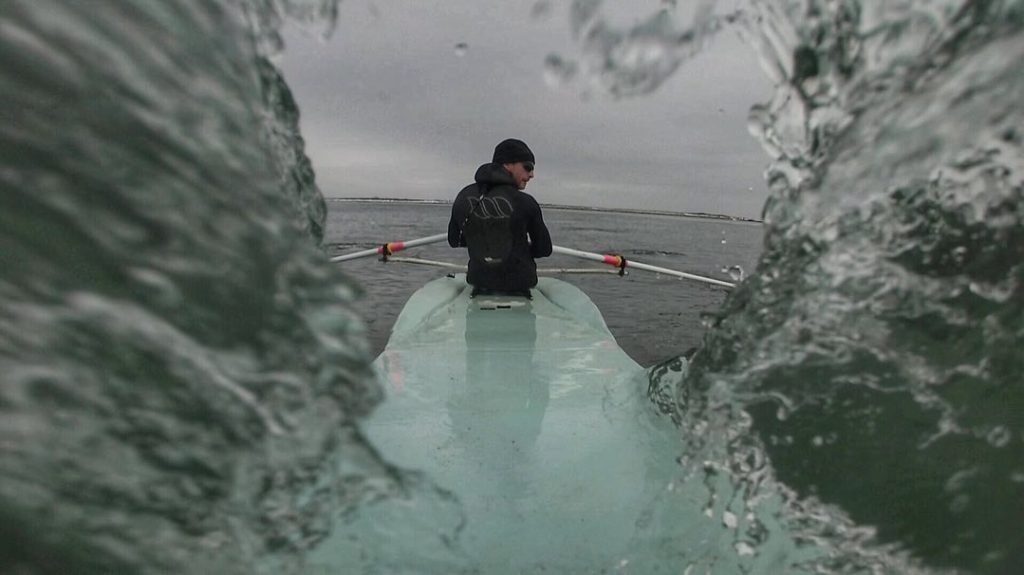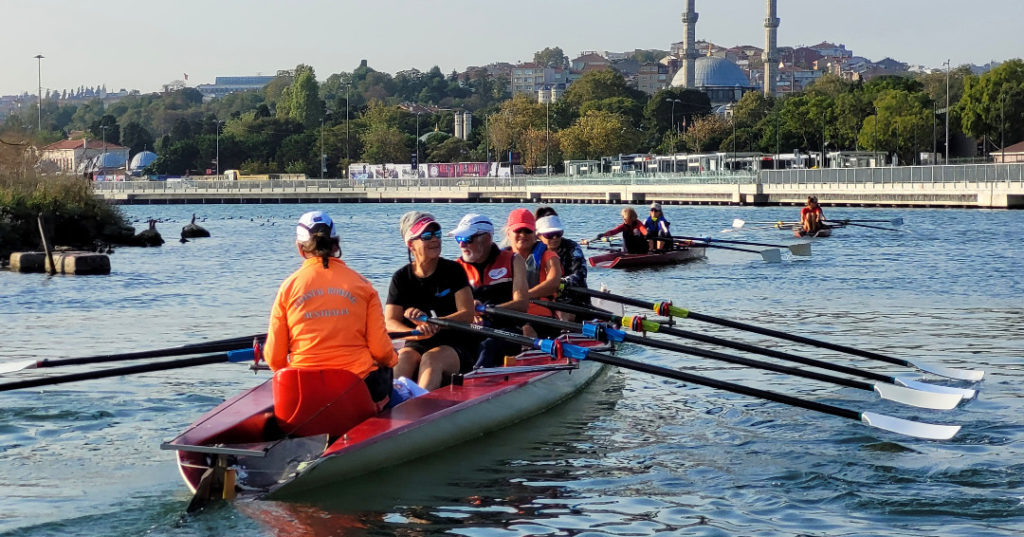
New Wave of Coastal Rowing Boats
There is a buzz about boats. Here in Manitoba, the province where I live in Canada, our provincial rowing association purchased two coastal doubles last year. We have a saltwater coast along the Hudson Bay in the far north of the province, although challenging to access since there are no roads there. But we have big lakes, and the waves and conditions they can create makes a case for coastal equipment. Saskatchewan, the completely landlocked province to our west also purchased a coastal rowing boat. It makes sense.

Coastal rowing is growing
Rowing The World has been an ardent fan of coastal rowing since our inception. Our very first tour, a test of rowing in northern Italy and Switzerland in 2013 had us out in coastal boats in Bellagio. We liked it so much we have returned annually to row coastal boats on Lago Maggiore and are heading back to Bellagio on Lago di Como and Lago di Garda in May. Coastal boats have opened up so many touring destinations for us on both saltwater and fresh. The boats may be heavy and awkward to carry and transport. Their stability in a range of water conditions more than compensates. It is just fun to do a little bouncing about in the waves too.
Excitement is building about coastal rowing. As coastal rowing seems more and more likely to be included in the 2028 Olympics, more people are starting to catch the coastal wave. The Europeans figured this out quite a while ago. Hong Kong was also early to adopt. World Rowing, especially through the work of Guin Batten Chair of the Coastal Rowing Committee, recognized that to bring more countries to rowing, coastal offered tremendous opportunities especially for island nations with no “flatwater”.

Coastal rowing boats are evolving
A sure sign that something is really happening is when businesses start investing. It is expensive and a risk to design a boat, go into production and bring it to market. Rowing shells are not cheap things that can be rapidly rolled out of a manufacturing facility. An uptick in the number of boat builders in the coastal game plus innovation in design and construction methods means that the industry sees potential. Let’s pull back the paint booth spray curtain and see what is happening.
Earlier this year Tim Fenmore of Positive Float provided a brilliant series of interviews with seven coastal rowing boat manufacturers. All seven videos are well worth watching as the boat builders focus on their recent and upcoming innovation. This level of evolution and change in equipment has not been seen for a while in rowing and it is exciting.
Here are some of the highlights about the new wave of coastal rowing boats:
1. Immersive design process
Ben Booth of NEXT Boatworks is legendary. He has been called the Zen master of coastal chaos. Perhaps best known for his remarkable videos and photos of rowing through surf and freezing water, Ben loves all aspects of coastal rowing, whether beach sprints, endurance coastal racing or rowing touring in a coastal boat. In the interview with Tim, Ben speaks very articulately about how he and his company have combined his rowing passions with smart design. He wanted a boat which is really good in waves, is competitive in races but can be enjoyed by people new to rowing. Every aspect of the design was examined and reconsidered. Changes were made to the transom and the bow for improved performance in the waves. Concerned about safety during long rows and the risk of water entering the hall, the NEXT C1X hull is not pierced by anything except a pressure release valve. Most distinctive perhaps are the side drains. Immersive design means not only that Ben applied his extensive coastal skill and experience to the design and testing process, but the boat can be rowed while fully under water. All of that plus the boats are beauties with noteworthy shine and colours.
2. Specialization within coastal boats
Coastal racing has two very different disciplines. Beach sprints and the endurance format. Beach sprints begin and end on the beach, with the athletes racing to enter the boat, and sprinting to a finish line up the sand at the end. Agility to enter and leave the boat efficiently is needed along with fitness and rowing skill. Races can be lost right at the beginning when getting into the boat. Kanghua of China entered the coastal rowing boat market in 2021. We understand that they are developing a specialized boat designed for beach sprints. They are also experimenting with autoclave technology which will allow them to apply heat and pressure better, creating a more stable composite structure. Resin bonds better with the more heat you apply, meaning lighter but stronger boats will be possible.
Ave Rowing of Portugal has also been improving the design of its riggers to facilitate hasty entry and exit. Bow designed has been modified in the Kaito model so that the boats are lower and do not catch the wind as much. The boats still soar through the waves like birds, which is what Ave means. Filippi continues to innovate as well, with a new “piercing bow”. The shape is fascinating. Apparently they sought inspiration from the bows of sailing boats.
3. Good boats not for racing
Coastal rowing shells are generally less expensive than flatwater rowing shells, especially elite level competition boats. Regardless, equipment remains a barrier for more people to enter the sport, whether the price to purchase or access to a club. New to this market are Glide Boats. They design and build with the following guiding principles: simplicity, durability, affordability, availability and innovation. Two of their three models are too light to be rowed in coastal races.
The original concept of a “rowing for all” boat perhaps belongs to LiteBoat. They previously innovated stability and light boats. They have models which are raced and win medals but the larger market is rowers who do not compete. There is not a race for their Trio which can be rowed with three rowers or as a coxed double. The latter is popular in the Netherlands for rowing marathons or clubs use them for learn to rows. Then there is the rowing shell which you can also sail. Watch for future boats for families with dogs! We are very fond of rowing dogs.
Kayaks and canoes have long been used for camping expeditions into the wilderness. Ocean rowing boats support multi-week living, yet rowing camping is slow to catch on. Whaleboat in Belgium makes a boat to cross oceans in, and also what they are calling an adventure model. Marketed with images of rowing and camping in Norway, Croatia and Indonesia maybe more than just us will be dreaming of new places to explore.
4. Boat building in new places
The big name coastal boats have been predominantly manufactured in China, France, Italy and Portugal. That is changing. Glide Boats philosophy of “availability” means building in the UK and facilitating shipping within the country. NEXT Boatworks is the first coastal builder in North America. We were very interested to hear in Tim’s interview with Swift Racing that they are starting to build boats in Turkey. On our rowing tour in Istanbul and the South Aegean, we row coastal boats built by a local manufacturer. In St. Petersburg we rowed Russian coastal boats.

Challenges and future opportunities
Other coastal rowing boat builders emerging or re-emerging. Innovation is continuing. There is much discussion about the weight requirements for coastal boats in races and also the stresses on the equipment from formats such as the beach sprints. Opportunities abound too.
“This is a exciting time for our sport of coastal rowing. We are seeing rapid evolution in technique, boats and equipment which both help open up the recreational side of rowing to a much wider community and enable us to explore our personal limits in fantastic locations.”
Tim Fenemore
Positive Float Coastal Rowing
To stay on top of the latest innovations in coastal boat design and building, join Positive Float Coastal Rowing Group on Facebook.
Thank you for a truly “informative” article..agree with you on so many many points…especially about Ben Booth. He and his boats are legendary for sure..he is certainly a boat building genius & a true coastal Hero…guess the lifeboat & glide give people an opportunity to have an coastal experience..then when the addiction sets in they can give Ben a call for the real deal.
Thank you for your comment Lily. Good point about the potential evolution of boat ownerhsip!
Interesting reading. Thank you.
Can anyone put me in contact with sea rowing clubs on the North east/Yorkshire coast, I’m hitting a wall.
You are welcome Peter. Have you been in touch with Tim Fenemore – you can send an email via his website which is linked in the post. He may be able to help or direct you to who might know. Sorry, I do not have an contacts there.
Great article. While they aren’t World Rowing (FISA) Coastal shells; wouldn’t it be fair to consider Alden, Mass, Echo and Peinert all coastal shells built in America?
Thanks Bob. You are correct, those open water shells are built in North America. They are definitely worth knowing about and celebrating. The article is focussed on coastal and NEXT will be the first true coastal boats built in America or Canada. But whatever boat people get into and row is terrific!